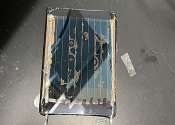A strategy to enhance the stability of perovskite solar cells under reverse bias conditions
If an individual solar cell is shaded and other cells in the same module are not, the sunlit cells can try to drive current through the shaded cell, resulting in an increase in temperature and potential damage to the cells. ...









